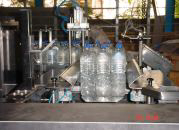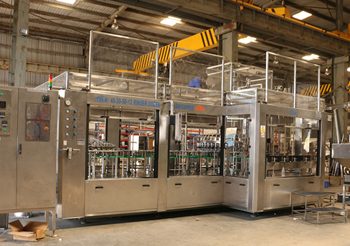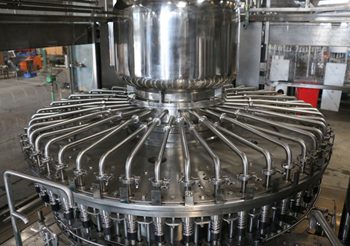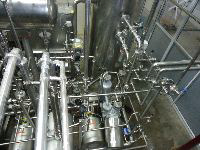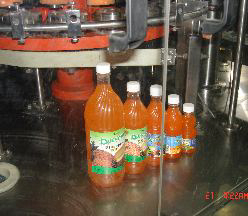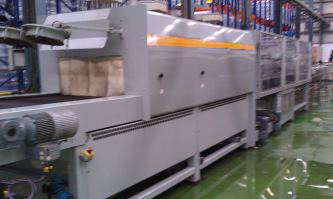
The food and beverage industry is one of the most dynamic and competitive industries across the globe. From local coffee shops to multinational fast-food chains, every business faces unique challenges in this ever-evolving market. However, some companies manage to thrive despite these challenges while others struggle to keep up with changing consumer tastes and preferences. What sets them apart? In this blog post, we will explore the key success factors that set successful businesses apart in the food and beverage industry. Whether you are an entrepreneur looking to enter the market or a seasoned professional seeking new insights, read on to discover what it takes to succeed in this exciting field!
Food and beverage industry overview
The food and beverage industry is an ever-growing market that encompasses a wide range of businesses. From restaurants to cafes, bars, bakeries, breweries, and more, the industry has something for everyone. The sector’s growth over the years can be attributed to several factors such as changing consumer preferences, globalization trends, technological advancements among others.
The food and beverage industry is also heavily regulated by various government agencies that enforce strict guidelines on health and safety standards. This regulation ensures that consumers are protected from harmful products while allowing businesses to operate with integrity.
Moreover, technology has had a significant impact on the industry in recent years. With digital platforms such as online ordering systems and food delivery apps becoming increasingly popular among consumers worldwide have led companies to adapt their business models accordingly.
The food and beverage industry continues to experience steady growth year after year due to its unique ability to cater to diverse consumer needs while providing endless opportunities for entrepreneurs looking for success in this exciting field!
Key success factors in food and beverage industry
The food and beverage industry is a highly competitive market that demands creativity, innovation, and quality products. For companies to succeed in this industry, they need to focus on certain key success factors that can make or break their business.
One of the most important success factors in the food and beverage industry is product quality. Consumers are more health-conscious than ever before, which means they are looking for high-quality products made from natural ingredients that meet their dietary needs. To stay ahead of competitors, businesses must ensure they offer fresh products with consistent taste and flavor.
Another critical factor is customer service. In today’s digital age where reviews can quickly spread across different platforms – social media included – companies must provide excellent customer service to stand out from the crowd positively. Responding promptly to customers’ queries and complaints shows customers how much you value them.
Innovation is another key element for achieving success in the food and beverage industry due to its fast-changing nature. Companies should always be brainstorming new ideas for launching innovative products by studying trends seasonally without neglecting consumer demand needs.
The ability to adapt swiftly as an organization plays a significant role in determining a company’s longevity within this sector because consumer preference changes frequently too! Businesses need flexibility when it comes down to adapting quickly without changing overall company culture or brand identity; it ensures growth opportunities remain open even during times of uncertainty.
Having strong partnerships with suppliers can help businesses secure access to premium raw materials at better prices while also ensuring consistency throughout production processes- making your enterprise as profitable as possible!
These key factors will play an essential role in shaping the future of any successful business operating within this dynamic sector – whether big or small!
Food and beverage industry growth drivers
The food and beverage industry is expected to continue growing in the coming years due to several key drivers. One of these drivers is the increasing global population, which leads to a higher demand for food and beverages. As more people are born each year, there will always be a need for sustenance.
Another growth driver is the rise in disposable income around the world. People with more money can afford to spend more on high-quality food and drinks, leading to an increase in sales for companies that offer those products. Additionally, consumers are becoming increasingly interested in health and wellness, driving demand for healthier options.
Advancements in technology also play a role in fueling growth within the industry. Innovations such as automation and robotics help streamline operations while improving efficiency and reducing waste.
Changes in consumer behavior have driven growth as well. Online ordering has become increasingly popular, allowing customers to easily order their favorite foods from home or work with just a few clicks of a button.
It’s clear that various factors come into play when analyzing what drives growth within this dynamic industry – but one thing remains certain: we’ll see continued expansion as time goes on!
Food and beverage industry challenges
The food and beverage industry has its fair share of challenges that can make it difficult for businesses to succeed. One major challenge is the constantly changing consumer preferences and trends. Customers are always looking for new flavors, healthier options, and more convenient products.
Another significant challenge faced by the industry is increasing competition. With so many players in the market vying for customers’ attention, it becomes tough to stand out from the crowd. This results in businesses having to invest heavily in marketing efforts to keep up with their competitors.
The industry also faces regulatory challenges such as safety standards and labeling requirements that need to be adhered to strictly. Non-compliance can lead to hefty fines and damage a company’s reputation.
Supply chain management is yet another obstacle faced by companies operating within this sector. Ensuring consistent quality levels while maintaining costs requires efficient management of logistics, inventory, distribution channels among others.
Fluctuations in prices of raw materials like sugar or wheat could have an adverse effect on business profitability due to rising expenses beyond control coupled with stiff competition leads into price wars which creates added pressure on firms’ margins making survival hard earned than ever before.
These are just a few examples of the challenges faced by businesses operating within the food and beverage industry today. It takes careful planning and execution strategies along with constant adaptation towards developing trends & preferences keeping best practices at forefront to mitigate such obstacles successfully
Key trends in food and beverage industry
The food and beverage industry is continuously evolving, with new trends emerging every year. Keeping up with these trends can be the difference between success and failure in this highly competitive industry.
One of the key trends in recent years has been a growing demand for plant-based options. As more people become health-conscious, they are looking for alternatives to traditional meat-based diets. This trend has led to an explosion of new plant-based products on the market, such as vegan burgers, dairy-free milk alternatives, and vegetarian sushi rolls.
Another important trend is technology-driven innovation. From online ordering systems to mobile apps that allow customers to customize their orders, technology is changing the way we interact with food and beverages. Restaurants that embrace technology are better able to streamline their operations and offer customers a seamless experience from start to finish.
Sustainability is also becoming increasingly important in the food and beverage industry. Consumers are starting to pay closer attention to where their food comes from and how it was produced. Restaurants that prioritize sustainability by sourcing local ingredients or reducing waste can appeal to this growing demographic of environmentally conscious diners.
Understanding the key success factors in the food and beverage industry is crucial for any business looking to thrive in this dynamic field. By recognizing growth drivers like shifting consumer preferences or technological advancements while navigating challenges like supply chain disruptions or labor shortages – businesses can stay ahead of competitors by capitalizing on key trends such as plant-based menus or sustainable practices throughout all aspects of production processes down through marketing strategies so as not only meeting customer demands but surpassing them too!
